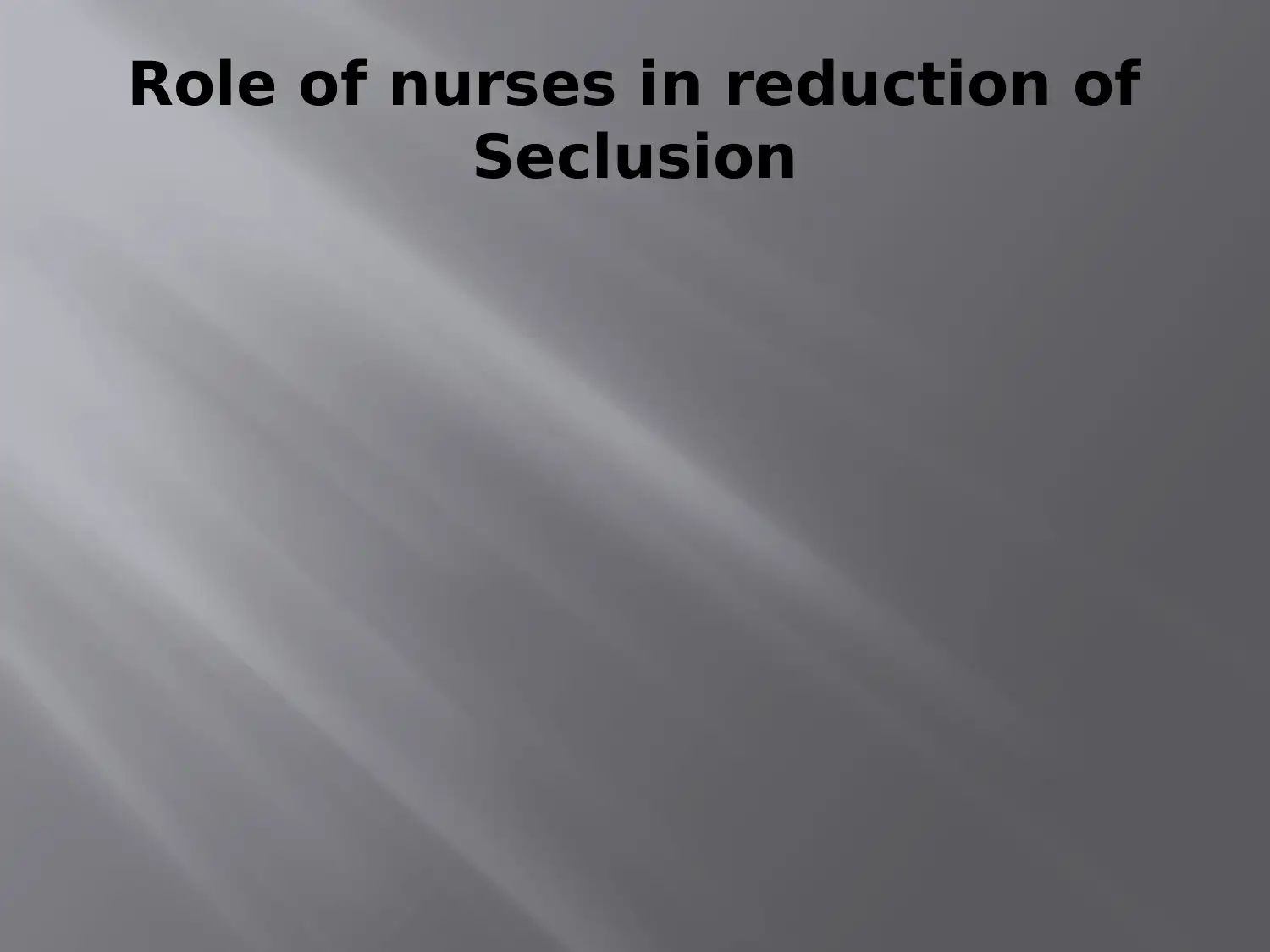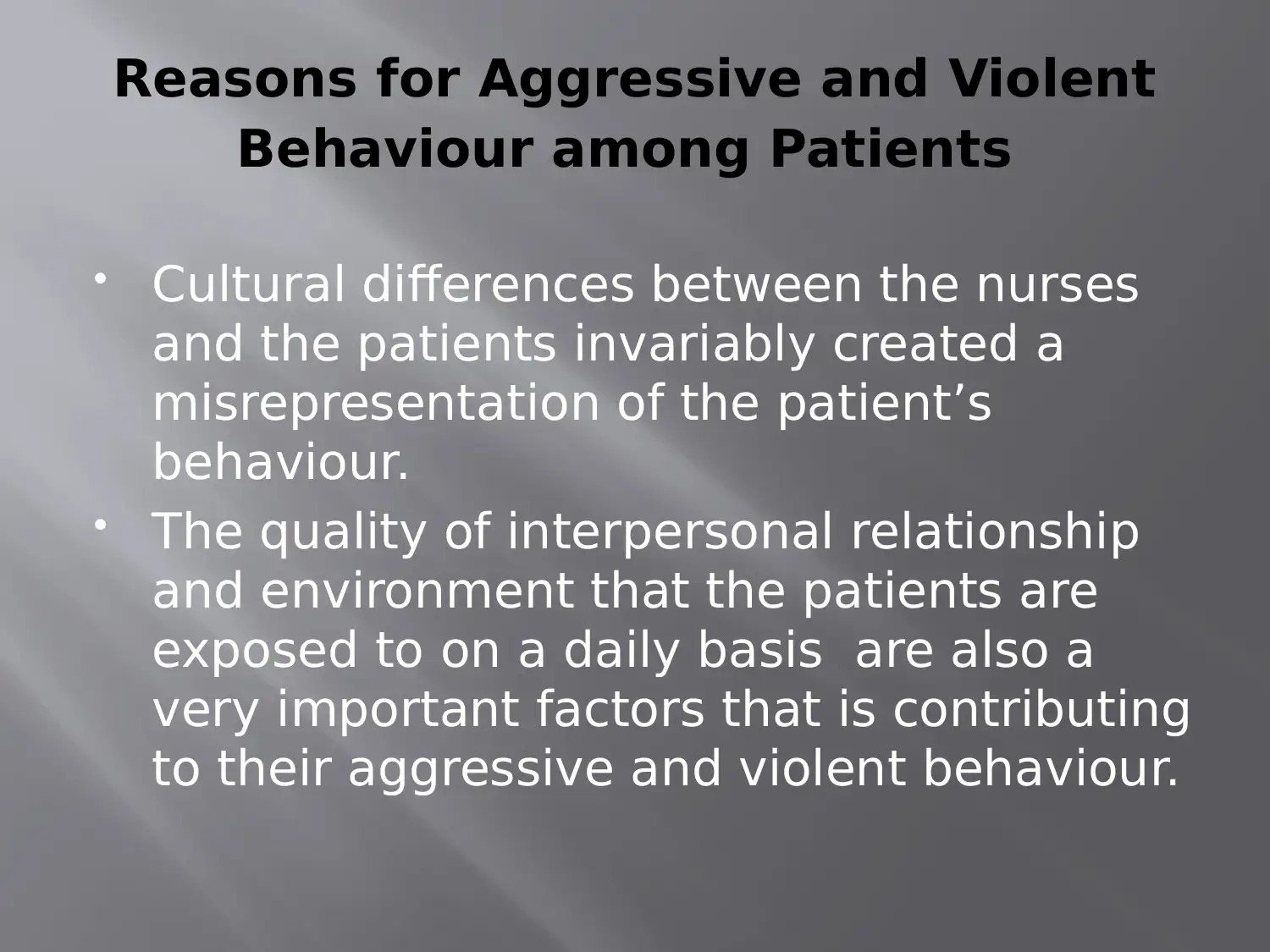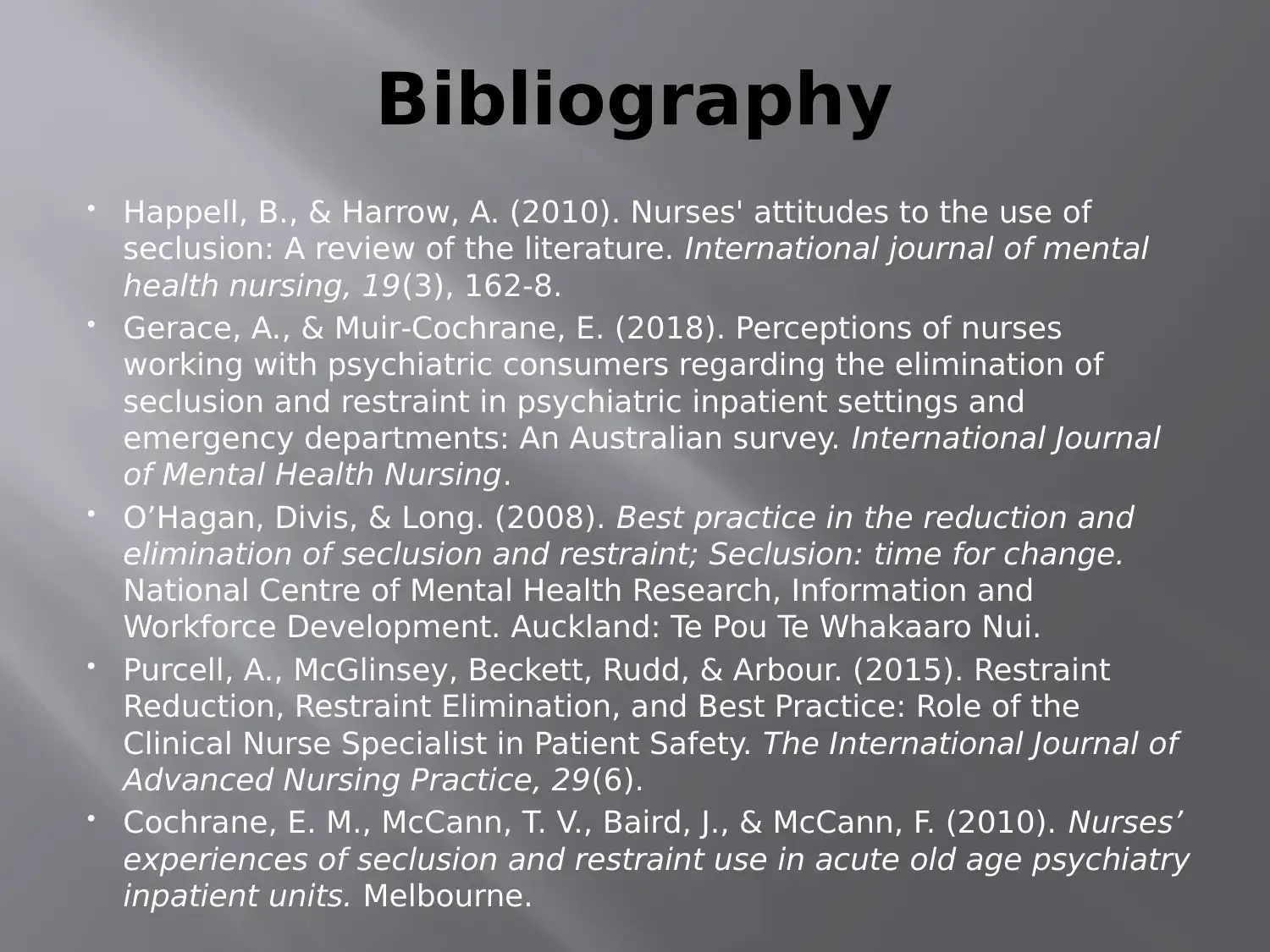NURS1102 - Examining the Role of Nurses in Seclusion Reduction
VerifiedAdded on 2023/06/07
|6
|454
|402
Essay
AI Summary
This essay examines the critical role nurses play in reducing the use of seclusion as a treatment method for mental health patients, particularly older adults. It addresses the definition of seclusion, reasons for aggressive and violent behavior among patients, and justifications cited by nurses for implementing seclusion in mental health settings. The essay references several studies and articles discussing nurses' attitudes towards seclusion, perceptions regarding its elimination, and best practices for reducing and eliminating seclusion and restraint. Organizational policies, staffing shortages, and the lack of alternative treatments are also explored as contributing factors influencing the use of seclusion. Desklib offers a range of similar academic resources for students.
1 out of 6













![[object Object]](/_next/static/media/star-bottom.7253800d.svg)